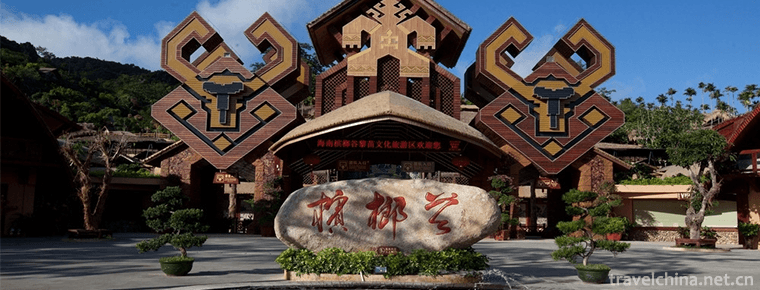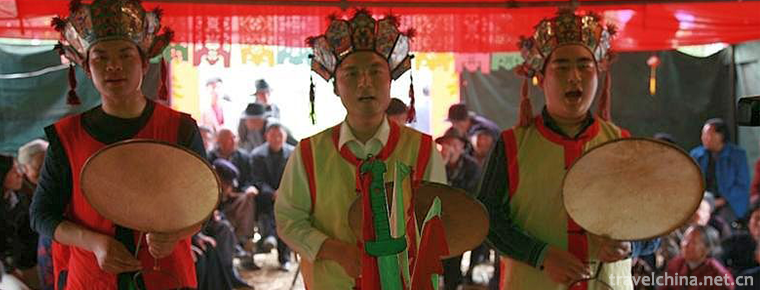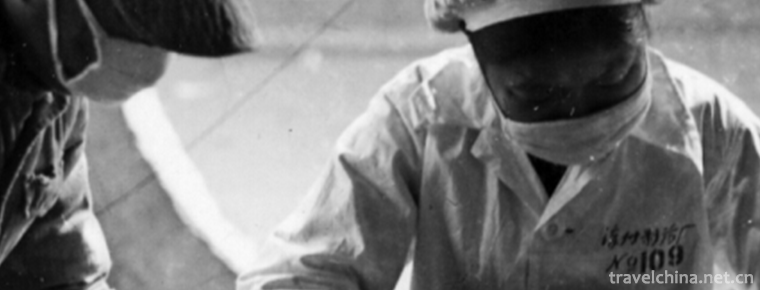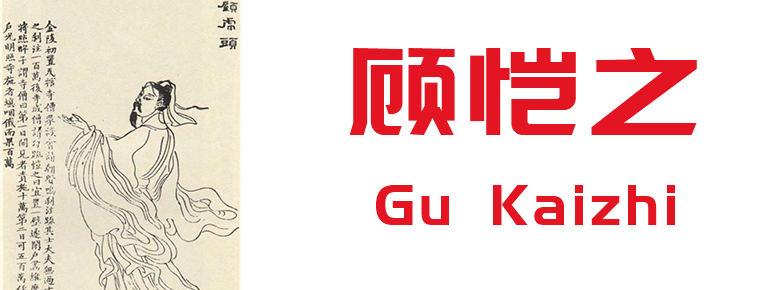Hailongtun Site
Hailongtun Site
Hailongtun is located on the top of Longyan Mountain, about 28 kilometers northwest of Zunyi City, Guizhou Province. It is also called Hailongdun, Longyantun and Longyantun. It is a castle site of Tusi in Song and Ming Dynasties. Its administrative division belongs to the Shuanglong Formation of Hailongtun Village, Gaoping Town, Huichuan District, Zunyi City.
The highest elevation in Tunshang is 1354 meters, and the lowest elevation is 974 meters. The relative elevation difference is about 300-400 meters. Tunding is flat and covers an area of about 1.59 square kilometers. There are nine gates in Tun Shang and six gates in front of Tun Shang: Tong Zhuguan, Tie Zhuguan, Feihuguan, Feilong Guan, Chaotian Guan and Feifengguan, and three gates after Tun Shang: Wan'an Guan, Erdaoguan and Toudaoguan.
Hailongtun was promulgated as a provincial cultural relics protection unit in 1982, promoted to a national key cultural relics protection unit in 2001, and listed in the World Heritage List at the 39th World Heritage Congress on July 4, 2015.
Historical evolution
Traceability
History records show that since the Qin and Han Dynasties, in the southwest of China, including Zunyi (formerly known as Bozhou), the central dynasty has been carrying out the policy of "subjugating foreigners with barbarians", and the territory was handed over to the local officials who paid tribute to the court. In order to maintain its dominant position, Yang Chieftain of Zunyi had three repairs to Hailongtun.
In the thirteenth year of middle school (859), Nanzhao Chief Dragon claimed that the emperor sent troops to occupy Soochow. Annan Capital protects the duplicate broadcasting state.
Tang Yizong Xiantong fourteen years (873 AD), Nanzhao Tusi anti-Tang, seized Soochow.
In the three years of Tang and Qianfu (876 A.D.), Yang Duan, the ancestor of Yang's family in Bozhou, took charge of Bozhou in Taiyuan, Shanxi Province. In order to preserve strength and fight with other tribes, he chose Longya Mountain to send troops.
Evolution
Baoqing three years (1227) in Southern Song Dynasty, Mongolia destroyed Xixia, Duanping first year (1234) combined with Song Dynasty destroyed Jin. After the extinction of gold, Mongolia and the Southern Song Dynasty began to face a positive conflict. The strategy adopted by Mongolia to bypass the Southern Song Dynasty from the west to the East made Sichuan and Chongqing the first place to fight frequently.
In the second year of Chunyou in the Southern Song Dynasty (1242), Yu Yu Yu was appointed as the placator of Sichuan Province, presiding over the defense of Sichuan Province, and publicizing his contributions.
In the fifth year of Baoyou in Southern Song Dynasty (1257), Lu Wende and Yang Wenyi, the envoys of the two governments, built a new city of Longyan because they thought it was the foundation of Bozhou. Longyan is now Hailongtun, so it is generally believed that Hailongtun was built in 1257. (The Stele of Yang Wen's Shinto)
Baoyou in Southern Song Dynasty (1258) first month, the Southern Song Dynasty sent Lufengnian Shu to supervise the Pass and Tungao affairs in Bozhou and other places.
In the first year of Kaiqing in Southern Song Dynasty (1259), Montgomery Khan died in the battle of Diaoyu City, which had a great impact on the later historical trend. All these are closely related to the positive advice and experience of Bozhou people.
In the first year of Wanli in Ming Dynasty (1573 A.D.), Yang Yinglong inherited the mission of propaganda envoy in Bozhou.
After the seventeen years of Wanli (1589 A.D.), Yang Yinglong adopted a two-handed strategy, making friends and attacking close, repairing the upper court and the court without major contradictions and conflicts of interests with the Ming Dynasty, and was often rewarded by the court. The privilege of Tusi was exercised downwards, which intensified the contradictions within Bozhou.
In the 24th year of Wanli in Ming Dynasty (1596 A.D.), Yang Yinglong, the Tusi of Yang's 29th generation, mobilized 80,000 servicemen and craftsmen and spent four years expanding castles and palaces on the basis of Longya Tun built by his ancestors, building 12 gates around them and building huge fortresses on mountains within 5 square kilometers. Buildings are built with jacks of huge stones. The gates are inscribed with the names of the gates. Arrow towers, warehouses, barracks and water jails are built on the gates. The stone walls between the gates are facing each other.
In the twenty-seventh year of Wanli (1599) of the Ming Dynasty, Yang Yinglong was consoled by the propaganda of Bozhou, and the court urgently sent 240,000 troops to eight routes. In the following year, Hailongtun was defeated and Bozhou (now Zunyi, Guizhou, to northern Guizhou) was calmed down. It lasted 114 days and was historically known as the Battle of Pingbo.
In February of the 28th year of Wanli in the Ming Dynasty (1600), Governor Li Hualong led the Eighth Route Army to broadcast it on the air. In mid-April, he joined Hailongtun, where a bloody battle began. On June 6, Hailongtun was attacked and Yang Yinglong hanged himself.
In the 20th year of Wanli (1601 A.D.), the Ming court abolished the Tusi system in Bozhou, appointed by the central government, and exchanged with local officials. It declared the end of the hereditary Tusi system of Yang surname, which ruled Bozhou for 725 years. From then on, the curtain of the "Turkish Return" in the Tusi area of the whole country was opened.
Repair history
In 1999, the Zunyi Municipal People's Government allocated funds to repair the 36-step ladder at Feihuguan.
In April 2002, Guizhou Cultural Relics Conservation Research Center compiled the Design Plan of Hailongtun Conservation and Reinforcement Project in Zunyi, Guizhou.
In September 2004, Shaanxi Institute of Ancient Architecture was entrusted with the preparation of Hailongtun Cultural Relics Protection Plan.
On September 10, 2005, the upper division of Hailong Tun was managed by the Huichuan District People's Government.
From February to September 2007, the people's government of Huichuan District carried out rescue maintenance on the city wall between Tongzhuan Pass and Tiezhuguan Pass in Hailongtun.
In 2008, the collapsed rocks of Xiamatai and Feihuguan in Hailongtun were cleaned up, and waterways, Feihuguan wooden bridge and tourist trails were repaired.
In 2009-2010, the Feihuguan renovation project was implemented, and the Feihuguan was renovated as a whole.
In March 2012, the declaration of the Tusi Site at Hailongtun in Huichuan District for World Cultural Heritage was launched.
From 2014 to 2015, the cultural relics such as Tongzhuguan, Tiezhuguan, Wan'anguan, Xiguan, Houguan, Watchtower, Haichao Temple and Ming Dynasty architectural sites were renovated.
Visiting reference
Climate
Zunyi, where Hailongtun is located, is located in the humid area of the middle subtropical monsoon climate. Like most areas of Guizhou Province, there is no severe cold in winter and no severe heat in summer. The annual average temperature is between 13 and 18 degrees Celsius, with abundant rainfall and sunshine. The warm and humid climate makes Zunyi a tourist attraction, and the tourism suitability of its climate resources is rare in China.
Optimum travel time
Due to the climatic characteristics of Zunyi, Hailongtun can be visited all the year round.
Traffic profile
The fare is 5 yuan for the bus from Maotaopu to Gaoping, and 10 yuan for the special line bus from Gaoping to Hailongtun, which can be reached in about 20 minutes.
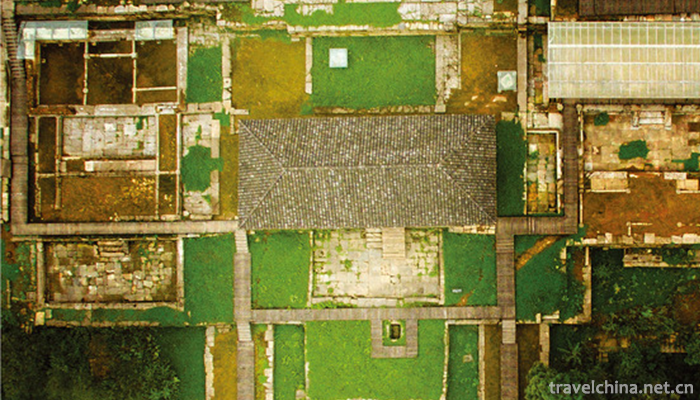
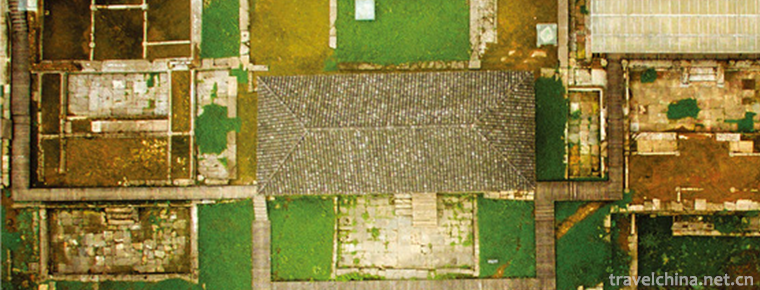
Hailongtun Site
-
century eggspreserved egg100years egg
Preserved egg, also known as preserved egg, egg, egg, egg, etc
Views: 228 Time 2018-10-12 -
Betelnut Valley Limiao Cultural Tourist Area
Hainan Betelnut Valley Limiao Cultural Tourist Area was established in 1998. It is located in the Ganshiling Nature Reserve at the junction of Baoting County and Sanya City
Views: 160 Time 2018-12-12 -
Nanchuan Jinfo Mountain
Jinfo Mountain: World Natural Heritage, National AAAAA Tourist Scenic Spot, National Key Scenic Spots, National Forest Park, National Nature Reserve, National Natural Heritage
Views: 304 Time 2018-12-12 -
Strange slope Scenic Area
Weipo Scenic Spot is located at the foot of Maoshan Mountain in Qingshuitai Town, Xinchengzi District, Shenyang City, Liaoning Province, facing the wilderness, backed by mountains
Views: 177 Time 2019-01-12 -
Porcelain painting
Porcelain plate painting refers to a kind of planar ceramic handicraft which is manually painted and glazed with special chemical pigments on plain porcelain plate and then
Views: 254 Time 2019-04-22 -
End drum cavity
Weishan Lake Drum Tune, also known as Duangong Tune, is a traditional folk art of the Han nationality originating in Weishan County and Dongping County of Shandong Province
Views: 230 Time 2019-04-28 -
Craftsmanship of Fireworks and Firecrackers
China is the first country to invent gunpowder in the world. Fireworks and firecrackers made of gunpowder also have a long history and enjoy a high reputation in the world. The record of firecrackers
Views: 149 Time 2019-07-10 -
Traditional preparation methods of traditional Chinese medicine
Traditional Chinese medicine preparation method, one of the traditional Chinese medicine, is declared by the Chinese Academy of Traditional Chinese Medicine and the Chinese Association of Traditional
Views: 212 Time 2019-08-03 -
Gu Kaizhi
Gu Kai Zhi (348 to 409 years), the word is long, the small character tiger. Han nationality , Jin Ling Wuxi people (now Wuxi, Jiangsu province). Outstanding painter, painting theorist and poet. Becaus
Views: 188 Time 2019-09-07 -
Neijiang administrative division
Neijiang City governs 5 county-level administrative divisions (Municipal District 2, county-level city 1, county-2), and 83 township level administrative divisions (street 13, town 70). It covers an area of 5386 square kilometers and has a population of 4.27 million.
Views: 170 Time 2020-12-16 -
Meishan transportation
Meishan occupies an important traffic area at the South Gate of Chengdu, including Chengdu Leshan expressway, Chengdu Ya'an expressway, Chengdu Ziji Luzhou Expressway passing Renshou City, Leya Expressway passing through Hongya City, and Suizi
Views: 362 Time 2020-12-18 -
Guangan Education
As of 2019, there are 1198 schools at all levels in Guang'an City, including 696 kindergartens (including 119 public kindergartens), 194 primary schools, 235 junior high schools, 6 special schools, 1 work study school, 42 ordinary senior high schools (includi
Views: 389 Time 2020-12-19

